S-class group photos: Difference between revisions
Pbcjohnston (talk | contribs) Added Canopus photo |
Pbcjohnston (talk | contribs) Updated caption on one photo |
||
| Line 142: | Line 142: | ||
[[File:S-boats subic nest.jpg|left|500px]] | [[File:S-boats subic nest.jpg|left|500px]] | ||
<div style="text-align: justify;"><span style="color:#00008B">Four 30 series S-boats moored to a pier at Naval Station Subic Bay, Philippines in the late 1930's. | <div style="text-align: justify;"><span style="color:#00008B">Four 30 series S-boats moored to a pier at Naval Station Subic Bay, Philippines in the late 1930's. This pier was built out from and parallel to the shore, just west of Rivera Point. Out of view to the right would have been the old Dewey Drydock at its own finger pier. In 1935 all submarines were repainted in a flat black, so this helps date the photo. | ||
Subic Bay became a mainstay of the U.S. Pacific Fleet in the post war years, even more so as naval activities at Cavite wound down in the 1950's. Subic became a major port of call and center of operations during the Vietnam War, and was bustling with activity during the Cold War in the 1980's. Webmaster Dave Johnston became very familiar with the place during that time. The pier in this photo was used for mooring large ships, even the USS New Jersey (BB-62) during a visit in 1985. | |||
<small>Photo in the private collection of Ric Hedman.</small> | <small>Photo in the private collection of Ric Hedman.</small> | ||
Revision as of 20:52, 26 February 2024
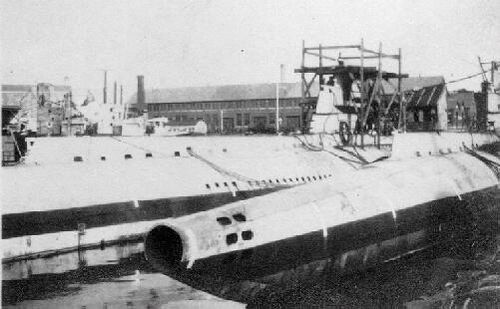
Photo in the private collection of Ric Hedman.
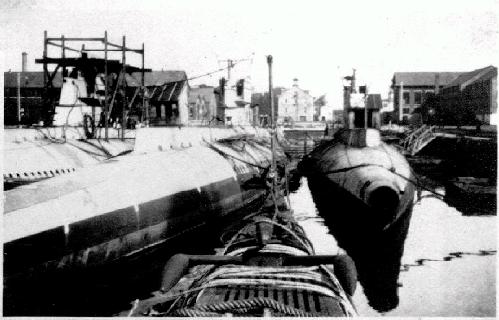
Photo in the private collection of Ric Hedman.

Photo in the private collection of Ric Hedman.
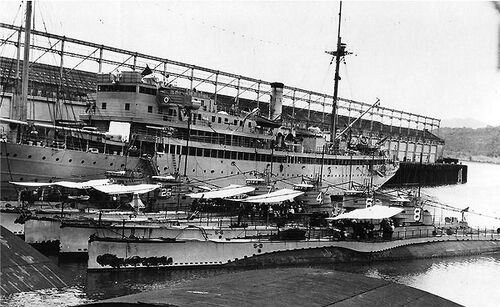
Photo in the private collection of Ric Hedman.
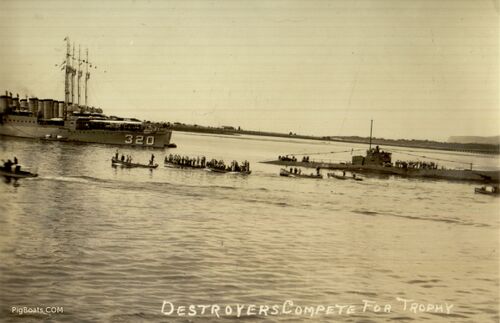
Photo in the private collection of Ric Hedman.

Photo in the private collection of Ric Hedman.

Photo in the private collection of Ric Hedman.

Photo in the private collection of Ric Hedman.
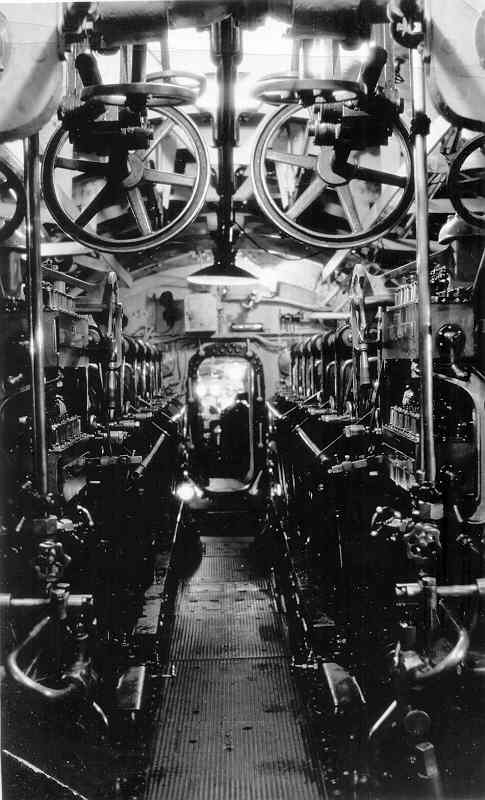
Photo in the private collection of Ric Hedman.
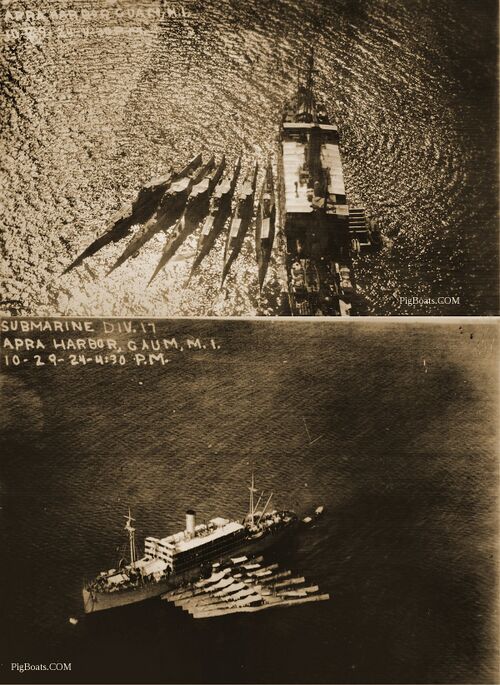
Photos in the private collection of Ric Hedman.
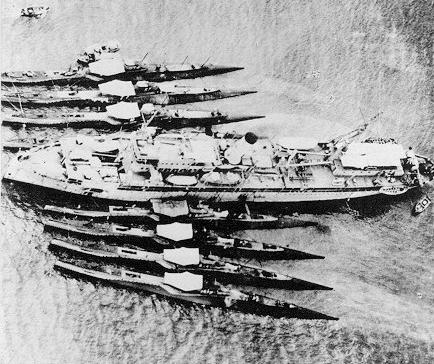
Photo in the private collection of Ric Hedman.

Photo in the private collection of Ric Hedman.
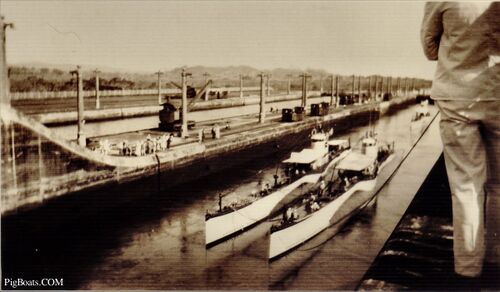
Three unidentified S-boats of the Government design in the locks at the Panama Canal, late 1920's. These boats are part of the S-10 group boats that had a stern torpedo tube and their bow planes below the water line. All four of those boats were regular visitors to the Canal Zone in the 1920's and early 1930's.
Photo in the private collection of Ric Hedman.
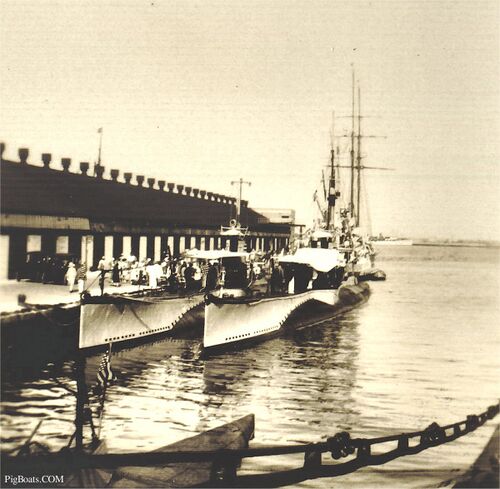
Two unidentified S-boats of the Government design, possibly S-8 or S-9 at an unknown location, late 1920's. These boats have the bow planes below the water line, ruling out the earlier Government design S-boats. There are two other Government design S-boats whose sterns can be seen at the bottom of the photo.
Photo in the private collection of Ric Hedman.
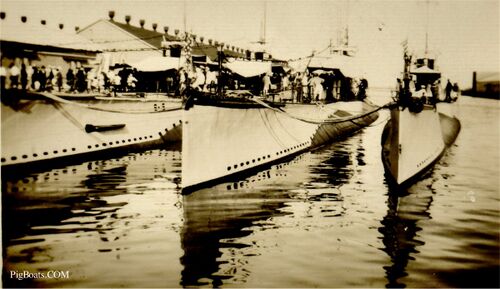
Three Government design S-boats sit alongside a pier in the mid 1920's. It was taken shortly after the photo above. The location is likely San Pedro (Los Angeles), California. S-15 (SS-120) is the inboard boat, with the other two unidentified, but they are one of the following: S-8 or S-9, or S-10 to S-13. Those six boats have the below water bow planes, and that feature of the Government design was only on those boats. This was an occasion that allowed civilian visitors, with a large number of guests on the pier.
Photo in the private collection of Ric Hedman.
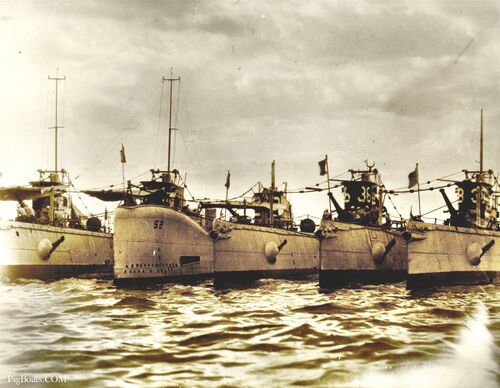
Five S-boats moored together in an Asiatic port, approximately 1924-1929. The three boats in the middle are (left to right) S-2, S-36, and S-38. The two boats on the far left and the one on the far right are not identified, but they are 30 series S-boats. S-2 spent most of her service life in Asian waters, including several years in reserve status. She is shown here with her distinctive bow buoyancy tank hump and the horizontal slit for the retracted bow planes.
Photo in the private collection of Ric Hedman.
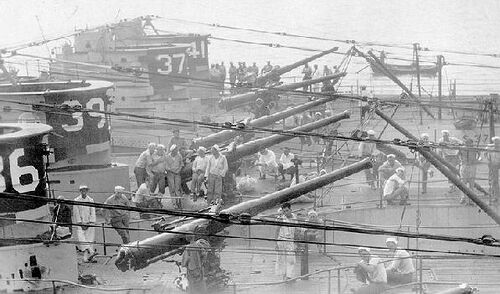
Photo courtesy of the NHHC.

S-36, S-41, and S-38 alongside the tender USS Canopus (AS-9) at Naval Station Subic Bay, Philippines, approximately 1925 to 1931. Canopus became a staple of the Asiatic Fleet, serving her submarines well right up to 1942. She stoutly resisted all Japanese attempts to sink her, but bowing to the inevitability of the loss of the Philippines, her crew reluctantly scuttled her in Manila Bay on April 10, 1942 to prevent her capture. Rest easy good ship. You are not forgotten.
Photo in the private collection of Ric Hedman.
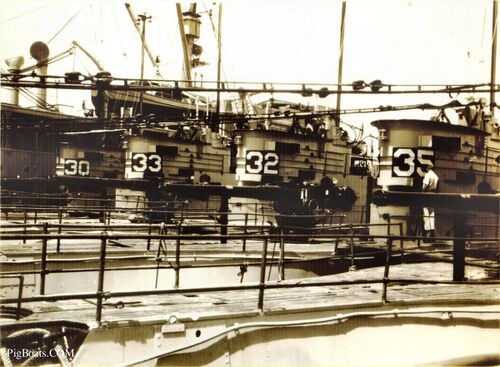
Photo in the private collection of Ric Hedman.
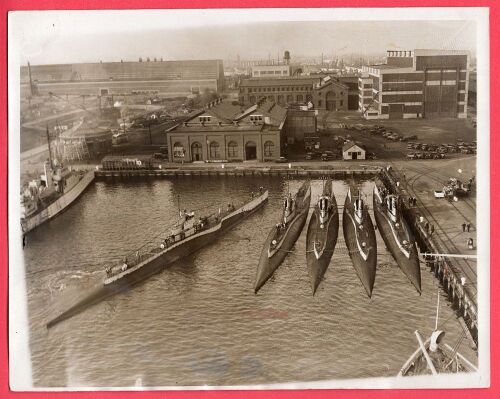
Photo courtesy of the Boston Public Library, Leslie Jones Collection. A printed copy is in the private collection of Ric Hedman.

Subic Bay became a mainstay of the U.S. Pacific Fleet in the post war years, even more so as naval activities at Cavite wound down in the 1950's. Subic became a major port of call and center of operations during the Vietnam War, and was bustling with activity during the Cold War in the 1980's. Webmaster Dave Johnston became very familiar with the place during that time. The pier in this photo was used for mooring large ships, even the USS New Jersey (BB-62) during a visit in 1985.
Photo in the private collection of Ric Hedman.
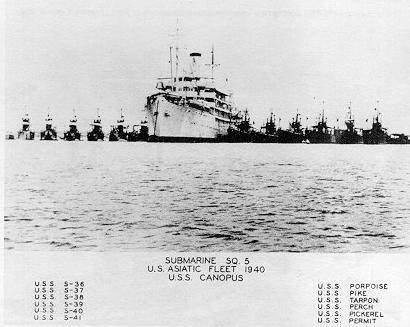
Photo in the private collection of Ric Hedman.
Page created by:
Ric Hedman & David Johnston
1999 - 2023 - PigBoats.COM©
Mountlake Terrace, WA, Norfolk, VA
webmaster at pigboats dot com
